Social Selling: 8 Ways to Sell More Using Social Media
Post summary:
- What is social selling?
- How social selling can grow your business
- 8 Ways to get started with social selling
It’s no secret.
Sales people struggle with generating new leads.
Gone are the days when you would pick up the phone, make 3 cold calls to reach a new prospect and get a meeting or demo. If you try cold calling today, it takes, on average, at least 8 phone calls.
And when you reach them, do you know what happens?
They don’t want to talk to you!
In fact, more than 90% of executives never respond to or buy from cold calls.
It’s safe to say that as sales people, we have our work cut out.
Given these challenges, how can we stand out? How can we generate more leads?
We do this through social selling.
Post summary:
- What is social selling?
- How social selling can grow your business
- 8 Ways to get started with social selling
It’s no secret.
Sales people struggle with generating new leads.
Gone are the days when you would pick up the phone, make 3 cold calls to reach a new prospect and get a meeting or demo. If you try cold calling today, it takes, on average, at least 8 phone calls.
And when you reach them, do you know what happens?
They don’t want to talk to you!
In fact, more than 90% of executives never respond to or buy from cold calls.
It’s safe to say that as sales people, we have our work cut out.
Given these challenges, how can we stand out? How can we generate more leads?
We do this through social selling.
What is social selling?
Social selling is when sales people use social media to find and engage with prospects. Sales people use social media to provide value to prospects by answering questions, responding to comments and by sharing content throughout the buying process – from awareness to consideration, until a prospect is ready to buy.
Social selling is the new sales model or sales 2.0.
 While the old sales model used to be about cold calling, sales demos and qualifying leads, the new way of selling means using social media networks to reach new prospects, educate them on how your company can help them grow their business, and nurture them through content.
The growth of social media usage has been a huge factor in why social selling has been adopted and several studies point toward the B2B buyer using social media as an important part of their research process.
Accenture’s State of B2B Procurement Study finds that 94% of B2B buyers conduct some degree of research online before making a business purchase, with 55% conducting online research for at least half of their purchases.
And what channels do B2B buyers use for research?
Yes, you guessed it. Social media.
Research by IDC has found that;
While the old sales model used to be about cold calling, sales demos and qualifying leads, the new way of selling means using social media networks to reach new prospects, educate them on how your company can help them grow their business, and nurture them through content.
The growth of social media usage has been a huge factor in why social selling has been adopted and several studies point toward the B2B buyer using social media as an important part of their research process.
Accenture’s State of B2B Procurement Study finds that 94% of B2B buyers conduct some degree of research online before making a business purchase, with 55% conducting online research for at least half of their purchases.
And what channels do B2B buyers use for research?
Yes, you guessed it. Social media.
Research by IDC has found that;
- 91% of B2B buyers are now active and involved in social media
- 84% of senior executives use social media to support purchase decisions
- 75% of B2B buyers are significantly influenced by social media
It’s not just a shift in the B2B buying process that has changed. The age B2B buyers, and more importantly decision makers, has changed too.
A 2014 study by Google and Millward Brown Digital found that 46% of decision makers are now aged between 18 and 34 years old (up from 27% in 2012), which coincidentally, is the largest social media user demographic.
 We can expect this pace to continue and that decision-making millennials (buyers aged between 18 and 34) will count for the majority share in the near future.
So what are the benefits of social selling?
We can expect this pace to continue and that decision-making millennials (buyers aged between 18 and 34) will count for the majority share in the near future.
So what are the benefits of social selling?
Social selling is when sales people use social media to find and engage with prospects. Sales people use social media to provide value to prospects by answering questions, responding to comments and by sharing content throughout the buying process – from awareness to consideration, until a prospect is ready to buy.
Social selling is the new sales model or sales 2.0.

While the old sales model used to be about cold calling, sales demos and qualifying leads, the new way of selling means using social media networks to reach new prospects, educate them on how your company can help them grow their business, and nurture them through content.
The growth of social media usage has been a huge factor in why social selling has been adopted and several studies point toward the B2B buyer using social media as an important part of their research process.
Accenture’s State of B2B Procurement Study finds that 94% of B2B buyers conduct some degree of research online before making a business purchase, with 55% conducting online research for at least half of their purchases.
And what channels do B2B buyers use for research?
Yes, you guessed it. Social media.
Research by IDC has found that;
- 91% of B2B buyers are now active and involved in social media
- 84% of senior executives use social media to support purchase decisions
- 75% of B2B buyers are significantly influenced by social media
It’s not just a shift in the B2B buying process that has changed. The age B2B buyers, and more importantly decision makers, has changed too.
A 2014 study by Google and Millward Brown Digital found that 46% of decision makers are now aged between 18 and 34 years old (up from 27% in 2012), which coincidentally, is the largest social media user demographic.
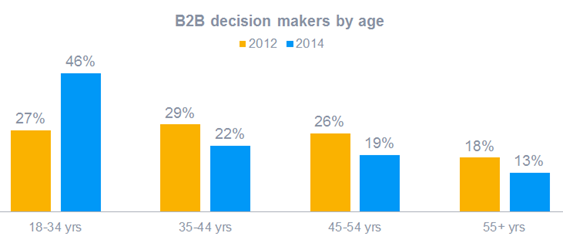
We can expect this pace to continue and that decision-making millennials (buyers aged between 18 and 34) will count for the majority share in the near future.
So what are the benefits of social selling?
How social selling can grow your business
In November 2014, Jamie Shanks from Sales for Life shared his key findings in a social selling study of more than 45,000 sales reps and 200 companies. What he found was this: For every $1 invested in social selling, the ROI is $5.
That’s right!
Every dollar invested in social selling resulted in a five dollar return.
Furthermore, Aberdeen Group released a study in February 2013 on the impact of social selling.
The study found that when you look at all sales KPIs (key performance indicators) – quota attainment, renewal rate and forecast accuracy – all these metrics were better when sales reps used social media (as show below).
 The research also found that sales reps who use social selling find on average 45% more opportunities. In addition, social selling helps best-in-class companies achieve a 16% gain in year-over-year revenue. That’s four times better than companies that don’t use social selling!
The key findings are clear: Sales reps sell more when they use social networks.
The challenge here is that only 1 in 4 sales reps know how to use social media for sales.
So how can your business adopt a social selling model?
Fear not! We’ve got you covered with 8 actionable social selling tips
The research also found that sales reps who use social selling find on average 45% more opportunities. In addition, social selling helps best-in-class companies achieve a 16% gain in year-over-year revenue. That’s four times better than companies that don’t use social selling!
The key findings are clear: Sales reps sell more when they use social networks.
The challenge here is that only 1 in 4 sales reps know how to use social media for sales.
So how can your business adopt a social selling model?
Fear not! We’ve got you covered with 8 actionable social selling tips
In November 2014, Jamie Shanks from Sales for Life shared his key findings in a social selling study of more than 45,000 sales reps and 200 companies. What he found was this: For every $1 invested in social selling, the ROI is $5.
That’s right!
Every dollar invested in social selling resulted in a five dollar return.
Furthermore, Aberdeen Group released a study in February 2013 on the impact of social selling.
The study found that when you look at all sales KPIs (key performance indicators) – quota attainment, renewal rate and forecast accuracy – all these metrics were better when sales reps used social media (as show below).

The research also found that sales reps who use social selling find on average 45% more opportunities. In addition, social selling helps best-in-class companies achieve a 16% gain in year-over-year revenue. That’s four times better than companies that don’t use social selling!
The key findings are clear: Sales reps sell more when they use social networks.
The challenge here is that only 1 in 4 sales reps know how to use social media for sales.
So how can your business adopt a social selling model?
Fear not! We’ve got you covered with 8 actionable social selling tips
8 Ways to get started with social selling
Social selling is ultimately about building relationships. But before you build them, you need to make sure you choose the right network and grow your audience. Then, you can build relationships, provide value and nurture leads.
Let’s dive right in!
Social selling is ultimately about building relationships. But before you build them, you need to make sure you choose the right network and grow your audience. Then, you can build relationships, provide value and nurture leads.
Let’s dive right in!
1. Choose the most relevant social network
It’s easy to get caught up in the next big social network, but the true winners of social selling are sales people that are active on the same platform as their potential customers. This is the foundation to social selling success.
It’s why sales people in fashion excel on Pinterest and why B2B sales people generate leads from LinkedIn.
So where do you start?
You start by identifying the social networks that match your potential customer:
 While Facebook has the lion share of all age groups, Forrester Research has found that decision makers primarily use Twitter and LinkedIn.
So if you’re selling products that appeal to teenagers, you should use Facebook and Instagram. And if you sell products or services aimed towards businesses and decision makers, then use LinkedIn or Twitter.
While Facebook has the lion share of all age groups, Forrester Research has found that decision makers primarily use Twitter and LinkedIn.
So if you’re selling products that appeal to teenagers, you should use Facebook and Instagram. And if you sell products or services aimed towards businesses and decision makers, then use LinkedIn or Twitter.
It’s easy to get caught up in the next big social network, but the true winners of social selling are sales people that are active on the same platform as their potential customers. This is the foundation to social selling success.
It’s why sales people in fashion excel on Pinterest and why B2B sales people generate leads from LinkedIn.
So where do you start?
You start by identifying the social networks that match your potential customer:
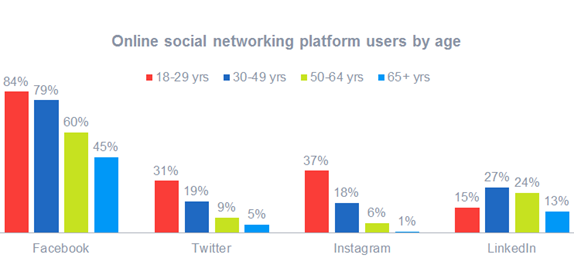
While Facebook has the lion share of all age groups, Forrester Research has found that decision makers primarily use Twitter and LinkedIn.
So if you’re selling products that appeal to teenagers, you should use Facebook and Instagram. And if you sell products or services aimed towards businesses and decision makers, then use LinkedIn or Twitter.
2. Follow the right Twitter users
To build your network, use a tool like Followerwonk.
Followerwonk allows you to search Twitter profiles by topic or keyword and that provides you with a list in order of top rated Twitter users. For example, you can begin your search with “CRM”, “Sales” and “Marketing”.
 By using Followerwonk, you can follow multiple Twitter users quickly rather than visiting and requesting to follow on each individual profile, which can be time consuming. Or, you can export the list of users and then filter through to the more relevant profiles.
By using Followerwonk, you can follow multiple Twitter users quickly rather than visiting and requesting to follow on each individual profile, which can be time consuming. Or, you can export the list of users and then filter through to the more relevant profiles.
To build your network, use a tool like Followerwonk.
Followerwonk allows you to search Twitter profiles by topic or keyword and that provides you with a list in order of top rated Twitter users. For example, you can begin your search with “CRM”, “Sales” and “Marketing”.
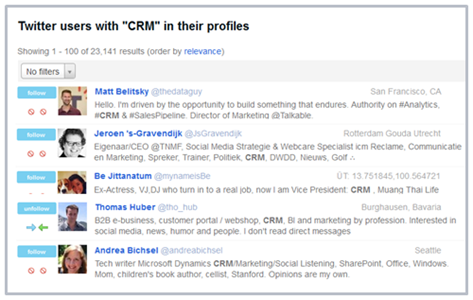
By using Followerwonk, you can follow multiple Twitter users quickly rather than visiting and requesting to follow on each individual profile, which can be time consuming. Or, you can export the list of users and then filter through to the more relevant profiles.
3. Create a wish list of companies and follow them
Do you ever dream about signing a mega-brand as a new client?
I know I do.
Well, it doesn’t have to be just a dream.
Small businesses to large corporations can be found on Twitter, Facebook and LinkedIn through company profiles or accounts. By following these companies, you can keep up to date on company news, such as when they win an award (you can send them a “Congrats!” message) or when they ask for product recommendations (you can send them an invite to a demo).
Create a wish list of 10-20 dream companies that are active on social media and start following them today. Like, retweet and engage with their status updates whenever possible. It might not be a dream for much longer!
Do you ever dream about signing a mega-brand as a new client?
I know I do.
Well, it doesn’t have to be just a dream.
Small businesses to large corporations can be found on Twitter, Facebook and LinkedIn through company profiles or accounts. By following these companies, you can keep up to date on company news, such as when they win an award (you can send them a “Congrats!” message) or when they ask for product recommendations (you can send them an invite to a demo).
Create a wish list of 10-20 dream companies that are active on social media and start following them today. Like, retweet and engage with their status updates whenever possible. It might not be a dream for much longer!
4. Get instant notifications when prospects join LinkedIn
Using LinkedIn’s Saved Search feature you to create a search based on your ideal customer profile, and then LinkedIn will then notify you each time a new sign up matches that profile.
To do this, perform a search using the LinkedIn search field found at the top of LinkedIn when you login, enter the criteria that matches your idea customer profile, such as job title, or industry and then click the search button.
 At this point, you will find that the results will return people who you are already connected to. To remove your first level connections, scroll down to the Relationship box (left hand side of the page) and 2nd Connections.
At this point, you will find that the results will return people who you are already connected to. To remove your first level connections, scroll down to the Relationship box (left hand side of the page) and 2nd Connections.
 Second level connections mean that you know someone in common, which makes it much easier to get introduced to a prospect.
Next, scroll up to the top of the page and on the right hand side click “Save Search”.
Second level connections mean that you know someone in common, which makes it much easier to get introduced to a prospect.
Next, scroll up to the top of the page and on the right hand side click “Save Search”.
 LinkedIn will then ask you to name your search (for my example, I would use “VP sales second level connections) and then set how often you wish to receive notifications (by weekly or monthly).
LinkedIn will then ask you to name your search (for my example, I would use “VP sales second level connections) and then set how often you wish to receive notifications (by weekly or monthly).
Using LinkedIn’s Saved Search feature you to create a search based on your ideal customer profile, and then LinkedIn will then notify you each time a new sign up matches that profile.
To do this, perform a search using the LinkedIn search field found at the top of LinkedIn when you login, enter the criteria that matches your idea customer profile, such as job title, or industry and then click the search button.
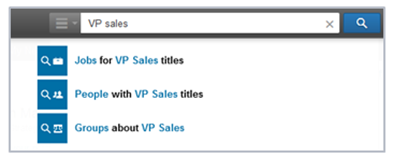
At this point, you will find that the results will return people who you are already connected to. To remove your first level connections, scroll down to the Relationship box (left hand side of the page) and 2nd Connections.

Second level connections mean that you know someone in common, which makes it much easier to get introduced to a prospect.
Next, scroll up to the top of the page and on the right hand side click “Save Search”.
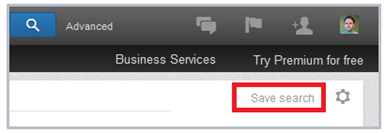
LinkedIn will then ask you to name your search (for my example, I would use “VP sales second level connections) and then set how often you wish to receive notifications (by weekly or monthly).
5. Join and participate in LinkedIn groups
LinkedIn has more than 400 million users.
As a platform, LinkedIn provides you with opportunities for networking, referrals, etc.
One of the biggest advantages on LinkedIn lies within groups – currently more than 1.8 million groups.
According to LinkedIn expert Wayne Breitbarth, only 16% of all LinkedIn users have joined 100 groups.
To find a group, search for a topic of your expertise. Remember, you’re not looking to mingle with sales people here, as their job is to sell their product. What you want to do is share knowledge and expertise to potential customers.
If your ideal customer is a small business owner, then search for groups relating to small businesses.
If you provide customer service tools, search and join groups that dedicated to customer service managers.

LinkedIn has more than 400 million users.
As a platform, LinkedIn provides you with opportunities for networking, referrals, etc.
One of the biggest advantages on LinkedIn lies within groups – currently more than 1.8 million groups.
According to LinkedIn expert Wayne Breitbarth, only 16% of all LinkedIn users have joined 100 groups.
To find a group, search for a topic of your expertise. Remember, you’re not looking to mingle with sales people here, as their job is to sell their product. What you want to do is share knowledge and expertise to potential customers.
If your ideal customer is a small business owner, then search for groups relating to small businesses.
If you provide customer service tools, search and join groups that dedicated to customer service managers.
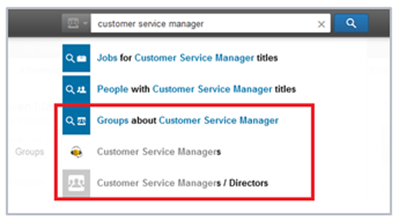
6. Connect with potential customers on LinkedIn
When you begin to contribute to groups, you will find that more people will view your profile.
When someone views your profile, send them an invitation to connect.
When you send an invite request on LinkedIn, try to change the default message from “I’d like to connect with you LinkedIn” to something like “Hi, thanks for viewing my profile. Would you like to connect on LinkedIn?”
This is a great way to start a conversation with a potential customer that has shown an interest in what you do.
Another way to connect with potential customers is to reach out to people in the same group. Here’s a template I use for connection requests.

When you begin to contribute to groups, you will find that more people will view your profile.
When someone views your profile, send them an invitation to connect.
When you send an invite request on LinkedIn, try to change the default message from “I’d like to connect with you LinkedIn” to something like “Hi, thanks for viewing my profile. Would you like to connect on LinkedIn?”
This is a great way to start a conversation with a potential customer that has shown an interest in what you do.
Another way to connect with potential customers is to reach out to people in the same group. Here’s a template I use for connection requests.
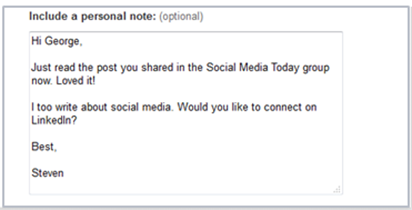
7. Contribute to existing conversations about your brand
Corporate Visions found that 74% of buyers choose the sales rep who first adds value during the buying process.
This is where you come in – adding value.
To add value, start by listening and responding to what people are saying about your brand. You can do this using Twitter’s search function, which allows you to see who is talking about you.
 On the Twitter feed search results page, you will the see the different conversations happening around your search query. Scroll through the feed and start engaging with users simply by retweeting or “liking” their posts, or by responding to suggestions and questions they ask.
On the Twitter feed search results page, you will the see the different conversations happening around your search query. Scroll through the feed and start engaging with users simply by retweeting or “liking” their posts, or by responding to suggestions and questions they ask.
 By contributing to these conversations, you add value to a prospects network and get your name on their radar.
By contributing to these conversations, you add value to a prospects network and get your name on their radar.
Corporate Visions found that 74% of buyers choose the sales rep who first adds value during the buying process.
This is where you come in – adding value.
To add value, start by listening and responding to what people are saying about your brand. You can do this using Twitter’s search function, which allows you to see who is talking about you.
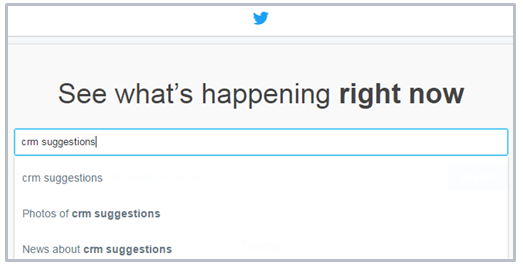
On the Twitter feed search results page, you will the see the different conversations happening around your search query. Scroll through the feed and start engaging with users simply by retweeting or “liking” their posts, or by responding to suggestions and questions they ask.
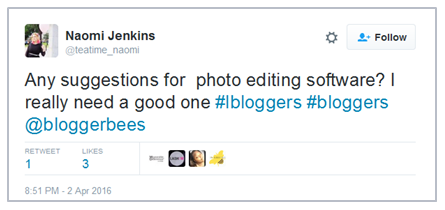
By contributing to these conversations, you add value to a prospects network and get your name on their radar.
8. Provide value by sharing relevant content
What’s the most popular type of content they seek out?
The answer is white papers, as 49% of B2B buyers consume white paperswhen evaluating a technology purchase.
 However, this doesn’t mean you cannot share any other type of content if you have yet to create a white paper.
Today, 60-70% of content in B2B organizations is not being used. If the conversations you engage in ask for information on best practices, share a blog post from your company blog. If a LinkedIn group is discussing product recommendations, you can share a webcast or product demo video.
There is no limit on what you can share providing the content adds value to the conversation. However, there’s no faster way to lose interest from a prospect than sharing irrelevant and self-promotional content.
However, this doesn’t mean you cannot share any other type of content if you have yet to create a white paper.
Today, 60-70% of content in B2B organizations is not being used. If the conversations you engage in ask for information on best practices, share a blog post from your company blog. If a LinkedIn group is discussing product recommendations, you can share a webcast or product demo video.
There is no limit on what you can share providing the content adds value to the conversation. However, there’s no faster way to lose interest from a prospect than sharing irrelevant and self-promotional content.
What’s the most popular type of content they seek out?
The answer is white papers, as 49% of B2B buyers consume white paperswhen evaluating a technology purchase.
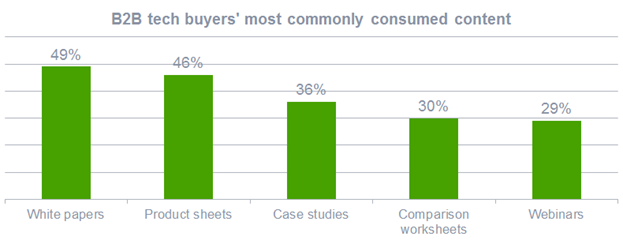
However, this doesn’t mean you cannot share any other type of content if you have yet to create a white paper.
Today, 60-70% of content in B2B organizations is not being used. If the conversations you engage in ask for information on best practices, share a blog post from your company blog. If a LinkedIn group is discussing product recommendations, you can share a webcast or product demo video.
There is no limit on what you can share providing the content adds value to the conversation. However, there’s no faster way to lose interest from a prospect than sharing irrelevant and self-promotional content.
Conclusion
There’s no doubt; social selling will help you sell more.
These 8 social selling tips will help you find and connect with prospects on LinkedIn and Twitter, the platforms where decision makers can be found, but the best results from social selling come when you make it your primary goal to provide value to prospects and build relationships.
Social selling is not a one-time activity and something that should be used alongside existing sales prospecting techniques. While it might be difficult to get started, especially if you’re new to social media, the benefits far outweigh the challenges.
One thing is clear: Prospects, customers and competitors all use social media for business. Embrace it and watch your sales grow or ignore it and get left behind. It’s that simple.
What do you think about social selling? Are you interested in giving social selling a try?
Let me know below.
P.S. If you got something valuable from this blog post, remember to tweet about Social Selling: 8 Ways to Sell More Using Social Media!
There’s no doubt; social selling will help you sell more.
These 8 social selling tips will help you find and connect with prospects on LinkedIn and Twitter, the platforms where decision makers can be found, but the best results from social selling come when you make it your primary goal to provide value to prospects and build relationships.
Social selling is not a one-time activity and something that should be used alongside existing sales prospecting techniques. While it might be difficult to get started, especially if you’re new to social media, the benefits far outweigh the challenges.
One thing is clear: Prospects, customers and competitors all use social media for business. Embrace it and watch your sales grow or ignore it and get left behind. It’s that simple.
What do you think about social selling? Are you interested in giving social selling a try?
Let me know below.
P.S. If you got something valuable from this blog post, remember to tweet about Social Selling: 8 Ways to Sell More Using Social Media!








.jpg)
0 comments:
Post a Comment